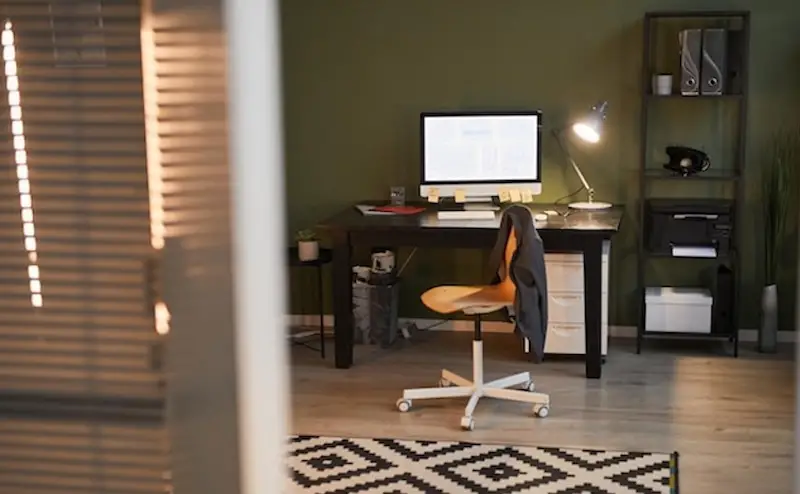The Best Strategies to Successfully Work Remotely

Working from home (WFH) spiked during the coronavirus pandemic lockdowns and stay-at-home directives. And while working remotely does come with many advantages and opportunities, it also has its share of challenges.
Whether you were forced into a remote work role during COVID lockdowns or you are a seasoned WFH pro looking to up your productivity, there are some effective ways and tips people are using to successfully work remotely you should know about and use.
Here are top tips and best strategies to make working remotely a success:
1. Keep Regular Hours
Human beings thrive on routine. There is something innately soothing about knowing what to expect each day. That is why it is so important to maintain regular hours when you work from home. That could be a traditional 9-5 or maybe something like 11-7 fits your style better.
You might be tempted to shrug off this first tip when you begin working remotely. After all, one of the biggest perks of working from home is the freedom to maintain a healthier work/life balance. While flexible scheduling is indeed nice, regular hours help keep us on track and in the loop.
Sometimes you may need to login early or work late to accommodate a colleague’s time zone. When you do, make sure to wrap up early or sleep in the next day to make up for the change. These occasional, small shifts are fine, so long as you maintain regular working hours whenever possible.
Still need help setting a routine and keeping track of time spent working? Automatic time-tracking apps can offer unique insight into when you are most productive and when you are more prone to slack off.
2. Use a Designated Office Space

In a perfect world, we would all have a dedicated home office with both a work and personal computer. It is more secure for employers and allows you to maintain a separation between your professional and personal lives.
Unfortunately, not everyone has a separate office space in their home, nor do most people have multiple computers to work from. It is still possible to carve out some physical and psychological space for work, though.
Start by dedicating a desk and some supplies for work use only. For instance, when you are working, you might opt to hook your laptop up to a monitor and external keyboard. When the device is in your lap, it is for personal use.
While this strategy might feel arbitrary at first, it can help you get into a more productive mindset as you transition from play to work and back to play again.
3. Set Boundaries with Colleagues & Family
One of the most difficult things to master when it comes to working from home is maintaining boundaries. Set up some basic ground rules for your family, roommates, or with anyone who shares your space.
If you have kids, for instance, you might lay down rules that dictate when they can enter your home office to chat. Discuss expectations with your partner, too – a simple daily conversation about when you expect to be in meetings can prevent unnecessary interruptions.
It is important to set boundaries with your colleagues, too. Without clear ground rules about your availability in place, you may find yourself constantly dodging phone calls while you are trying to relax.
Be flexible about your willingness to communicate after traditional business hours but be firm when guarding your free time. If you are constantly answering emails and phone calls, you will never get a chance to truly rest and recover.
4. Plan for Active Breaks
Breaks are incredibly important. They offer us an opportunity to relieve stress, restore our energy, and improve our performance. A good break can be incredibly refreshing, allowing us to return to our daily duties with renewed enthusiasm and new perspective.
Unfortunately, though, many of us do not use our break time wisely.
The next time you are feeling tired and in need of a break, consider how you will use your time most effectively. You can certainly while away the minutes on social media, but you will not find much relief in staring at your phone screen.
Instead, take a 15-minute walk around the neighborhood or throw on a quick yoga video. You will feel much more refreshed than if you spent your entire break on your device.
Just be careful not to gratuitously take advantage of break opportunities. Your dog probably does not need to go on eight walks a day.
5. Leave the House

Half the appeal of working from home is not needing to leave the house, right? Wrong.
While the elimination of your morning and evening commutes are indeed nice, you should not feel obligated to stay at home all day every day. In fact, doing so can actually jeopardize your productivity and your mental health.
Our bodies need sunlight and fresh air to flourish. If you are stuck indoors all day, whether at the office or in your house, you are bound to feel burned out faster.
Make a plan each day for leaving the house. Take a walk, have lunch with a friend, or simply run errands – there is no need to overthink! If possible, enjoy a sunny day by working for an hour on your laptop in a nearby park.
Even a simple cup of coffee on your porch can do wonders for your frame of mind.
6. Socialize with Your Co-Workers
Remote work can be thrilling – at least at first. After the excitement of working from home starts to wear off, though, you may find yourself isolated and lonely. This is especially true for extroverts.
If you find yourself missing watercooler chats and Friday evening happy hours with the team, discover new ways to bond with colleagues. This can be a challenge during our current era of social distancing, but there are opportunities for connection.
Instant messages are no substitute for in-person catch ups but hanging out virtually can still provide several benefits. Before you knock Zoom happy hours and other remote socialization opportunities, give them a try!
7. Make Your Voice Heard in Meetings
It can be hard to find your voice in video conferences and on conference calls. We are all still adjusting to communicating virtually. Between technical issues and chatty colleagues who dominate the conversation, it can be a real challenge to make your voice heard.
If you are eager to stand out in these meetings, try turning on your camera. Video calls naturally attract more attention, and it is easier to command a virtual room when you are using body language.
As you get set up for your next meeting, take a moment to modulate your voice, too. Check your microphone settings to see how your voice is coming across to others. Speak a bit more slowly than you might in person, taking care to enunciate. Pause occasionally for confirmation that your colleagues are following your thought process.
It may take some practice, but this style of communication can really give you an advantage when working from home.
8. Communicate Across Channels
We all have our own communication preferences. You might appreciate a well-crafted email, while your boss may prefer a phone call. When working from home, these preferences matter more than ever before.
It is important to collaborate on terms that feel fair to everyone involved. By using multiple forms of communication, you demonstrate an understanding and respect for the preferences of your colleagues.
Start by considering your own preferences for communicating with your team. Then check in with your colleagues to see how they feel. Keep these preferences in mind the next time you reach for the phone to call your co-worker or fire up a conference call.
The impact might be subtle, but diversifying the way you communicate can have tangible results amongst your team.
9. Dress the Part

Sweatpants and hoodies are undeniably comfortable. They are also not very different from pajamas. Regardless of whether your employer has instituted a remote work dress code, it is a good idea to save your sweats for the weekend.
There is no need to dress formally, of course, but a nice shirt and pair of slacks can go a long way in setting a professional tone.
Getting dressed for remote work is less about the clothes themselves and more about signaling a start and end to your day. The simple act of taking off your pajamas and putting on something more professional can transform your state of mind.
Thankfully, there are several new styles and trends that are as professional as they are comfortable – athleisure is the new power suit, after all!
10. Take Sick Leave and Vacation Time
Just because you are not going into the office does not mean you do not deserve a break. That is especially true amidst a global pandemic.
If you are not feeling well, make sure to use the sick leave you have earned. You will probably be tempted to answer emails and phone calls throughout the day.
Do not be afraid to use your phone’s “do not disturb” settings when you are taking time off. Just be sure to communicate your availability – or lack thereof – with your supervisor before doing so.
Vacation leave is just as important as sick leave. Mental health is often left out of the remote work conversation, but we need time off to stay sane.
Even if you decide to embrace a staycation in lieu of a big vacation, make time to relax and spend time with loved ones. You will return to the virtual office with renewed energy and increased efficiency.
In Conclusion
These tips serve as a foundation for the remote work experience. Now, it is time to figure out what works best for your lifestyle.
Of course, the tips are not one size, fits all, so if something does not fit into your routine, do not be afraid to edit. It is totally okay to adjust your routine over time.
Try experimenting over the next few weeks and months. Anytime you find yourself in a remote work funk, it is time to switch things up once more!





















![How One Homeowner's Dream Reno Turned into a Nightmare: What You Can Learn from It [node:title]](/sites/default/files/styles/video_thumbnail_bottom/public/man-painting-home-renovation.jpeg?itok=t7ET9um4)
